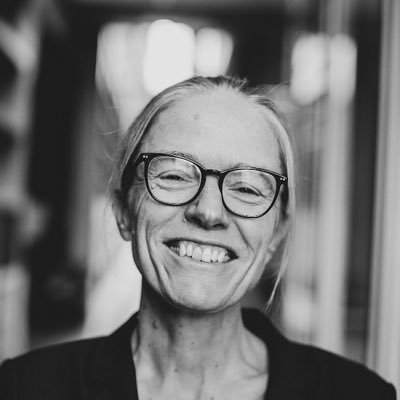Published:

The impact of human activity on the environment is widespread and widely known.
An increasingly warming planet has affected the natural balance of Earth's ecosystems, creating dramatic ripples that range from extreme weather events and disrupted food production and supply chains to the threat of extinction of more than half a million animal species.
And the effects are keenly felt in our oceans, which are losing oxygen at a rapid rate across the world, affecting the biodiversity that has historically kept marine environments on an even keel.
The recent expansion of low-oxygen environments in our oceans, caused by human activities, is a major concern.
To discuss this phenomenon, we spoke to Professor Caroline Slomp, an expert in Earth and marine sciences, based in the Netherlands, who is visiting Heriot-Watt University on 1 May to deliver a talk, ‘Coastal dead zones – is it too late to turn the tide?'.
“There have always been marine environments low in oxygen on Earth – it's a natural phenomenon” says Caroline, who is a leading professor at Radboud University and Utrecht University in the Netherlands.
“However, the recent expansion of such low-oxygen environments in our oceans, caused by human activities, is a major concern.”
So, what are the factors creating these low oxygen marine environments?
“There are many drivers of low oxygen in the sea,” Caroline explains, “including the warming of the seas, which leads to less oxygen supply to deeper waters and, in coastal areas, an elevated input of nutrients.”
Excess nutrients, termed ‘eutrophication', accelerates the occurrence of blooms of algae, that sometimes even produce toxins.
“The nutrients fuel algal blooms which, when the algae die, can sink, decay and, ultimately remove oxygen from seawater.”
And eutrophication isn't just a matter of concern for warmer climes.
As Caroline has found on her many years' conducting research at sea: “Low oxygen in seawater is a worldwide problem.
“Parts of the ocean where the oxygen supply through vertical or lateral mixing is naturally limited, can become low in oxygen. Such regions are found in both coastal and offshore areas as far apart as the Baltic Sea and Gulf of Mexico.”
Maintaining a healthy temperature for our oceans, which cover over 70% of Earth's surface, is vital to their environmental prosperity.
Caroline says: “Healthy seas aren't too warm and should contain moderate levels of nutrients and sufficient oxygen to allow a wide diversity of organisms to thrive.
“They should also not suffer from pollution. Unfortunately, human impact is affecting so many marine environments negatively that it's difficult to think of an example of a truly thriving, healthy marine environment, anywhere in the world”.
But all is not lost. As Caroline will explain in her talk, which is being hosted by The Lyell Centre, Heriot-Watt's centre of excellence for earth and marine sciences, by understanding the key biogeochemical processes that sustain low oxygen coastal waters, there may be a road to recovery.
“Many efforts are currently underway to restore water quality, particularly in coastal areas. In my talk, I will cover the key biogeochemical processes that are driving – and sustaining – low oxygen levels and explain the factors that control their recovery.
“But I'm also keen to speak to and learn from researchers and other attendees that share my interest in how the ocean responds to environmental change. Only through sharing and collaboration can we fully explore potential solutions to global environmental problems.”
EVENT: Coastal dead zones – are we too late to turn the tide?' is taking place in Seminar Room 2 at the Lyell Centre at Heriot-Watt University on Wed 1 May from 1430-1530. Tickets are FREE and available via this link.